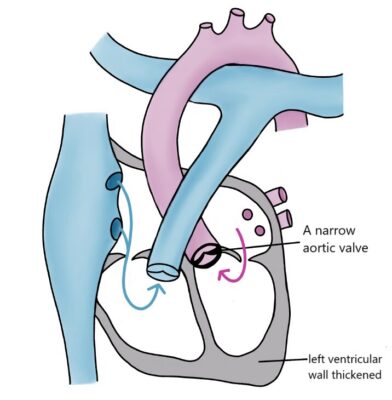Aortic Stenosis, AS
Aortic stenosis (AS) is a malformation that restricts the opening of the aortic valve. The left ventricle pumps blood into the aorta at higher than normal pressure. The walls of the left ventricle thicken, and its function can fail. The base of the aorta above the valve enlarges.
Mild aortic stenosis does not require treatment, and individuals can live normally with this condition. However, the stenosis usually worsens over the years. Severe stenosis requires correction either through cardiac catheterization or surgery. Physical exertion can cause severe arrhythmias in patients. It is advisable to discuss exercise activities with a pediatric cardiologist. If the valve does not close tightly, it is referred to as aortic regurgitation (Aortic Insufficiency, AI).
In children, the primary goal is to repair and preserve their own valve. When aortic stenosis is surgically treated during the growth period, the surgeon separates the valve leaflets from each other, carefully avoiding excessive separation that would result in valve leakage. Therefore, some degree of stenosis often remains after surgery. A mechanical valve prosthesis is typically not implanted until the teenage years or later because the artificial valve does not grow with the heart. In adults, a stenotic aortic valve is most often replaced with an artificial valve. Mechanical prosthetic valves require anticoagulant medication. Patients need lifelong cardiac monitoring.
